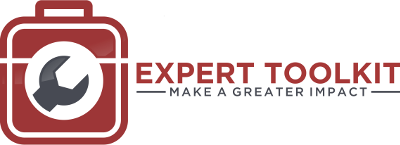Forget the process mapping software, get out the brown paper
Process mapping and management software solutions have undoubtedly advanced significantly over the last half-dozen years. The range, power and intelligence available in these applications is continually developing - adding enhanced functionality for integration, automation, business rules and much more.
Sometimes though, it's not such a great idea to head straight for the process mapping software. That's the view of the team at Expert Toolkit anyway. Why, you ask? Well, in spite of these amazing advances (and we love them - don't get us wrong) sometimes a lower-tech approach is more advisable for taking process performance to the next level. This is especially true at the outset of a process improvement journey.
In particular, we like the use of lower-tech approaches in the following situations:
- You are dealing with a very broad end-to-end process that cuts across many organizational silos and functions. Oftentimes, the people and teams executing these sorts of processes have never met and no single person or group understands the process from beginning to end.
- The process involves a mix of the physical (things), personal (people), geographical (distance), mechanical (machines) and technological (software) to make it work.
- The process hasn't been looked at for a very long time and the critical "whys" have not been asked to ensure that things that perhaps used to make sense, still make sense.
- It's time for a big picture perspective to look top-down and evaluate the process, the structure, teams and tools in an holistic manner.

A Brown Paper Process Mapping Session Output Example
In any of the above situations we find that jumping straight into a technology-enabled software solution can hold us back from a few essential elements required for exceptional process performance
- We miss the big picture.
- We miss asking "why is it done that way".
- We miss getting an end-to-end view of the whole process.
- We don't "go and see" how things actually work, or should work.
- We don't involve all of the process actors involved in executing the process and who invariably have an immense amount of value to add to make it better.
Sometimes we can just flat-out miss the obvious and we end up automating a bad process (a bad process working more efficiently or faster is still a bad process) or streamlining a process that should be totally eliminated.
So before jumping straight into that process improvement software, take a few moments and assess the situation. If you fit any of the above criteria perhaps it's time to take a more low tech approach first. One low-tech approach we love in particular is brown paper process mapping. This is about as low-tech as it gets, but it can save a lot of wasted time, money, rework - and it will give you the added bonus of securing a significant amount of stakeholder buy-in regardless of which way you go.
If you want to learn more about brown paper process mapping, don't forget to check out Expert Toolkit's How to do Brown Paper Process Mapping guide. Adding this skill to your process mapping armory will make any work you do using process mapping software even more powerful.
Share this article
- Tags: Best Practices, Collaboration, Expert Knowledge, Lessons Learned, Process Excellence, Team Insights, Transformation
